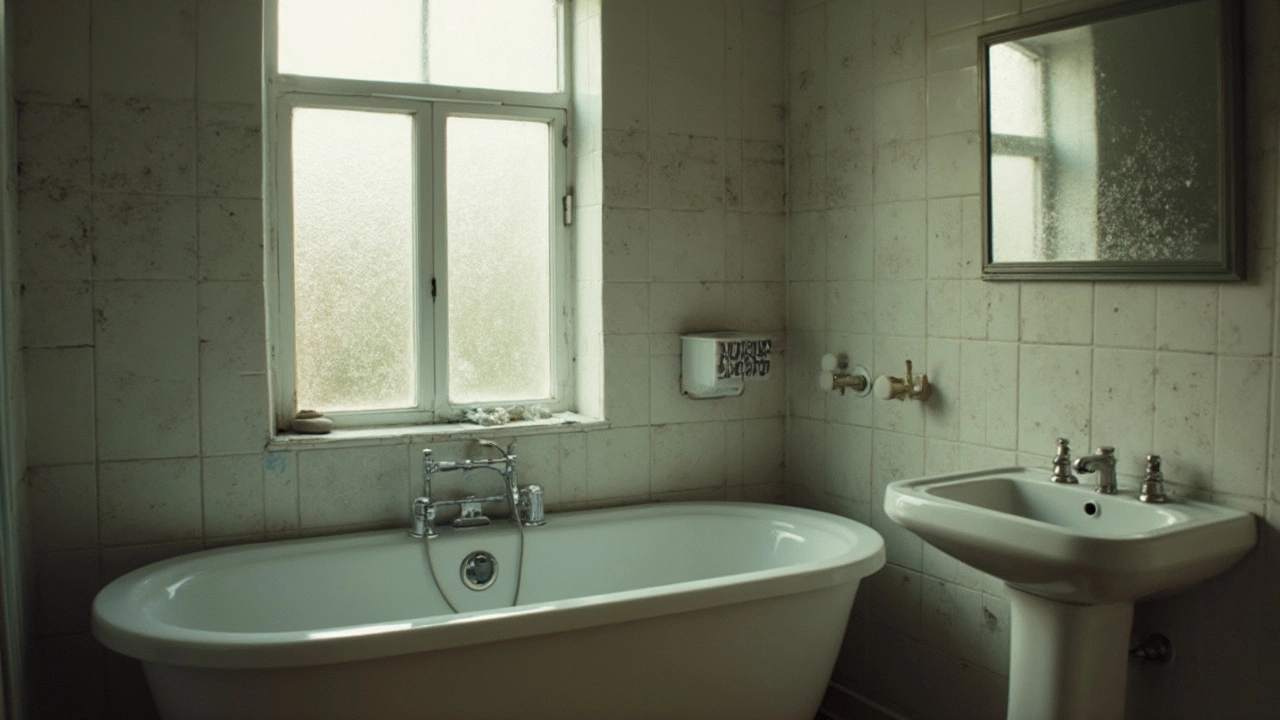Ever walked out of a bathroom feeling like a steam room? That’s a sign your ventilation isn’t doing its job. Too much moisture can lead to mould, slippery floors and a musty smell. The good news? Fixing it is easier than you think, and you don’t need a PhD to get it right.
First, understand what a ventilation system actually does. It pulls humid air out and pulls fresh air in, keeping the room balanced. When the fan works, steam from showers disappears, woodwork stays dry and you avoid costly repairs later on.
Not all fans are created equal. Look for the CFM rating – that’s cubic feet per minute, the measure of how much air the fan moves. A rule of thumb is 1 CFM per square foot of bathroom area. So a 50‑sq‑ft bathroom needs around 50 CFM. If you have a separate shower enclosure, bump the number up by 20‑30%.
Noise matters, too. Fans are rated in sones; lower numbers mean quieter operation. A fan around 1.5‑2.0 sones is usually a good balance of power and peace. Also, check if the fan has a built‑in light or humidity sensor – those extras can make life easier.
Even the best fan can lose efficiency if you ignore it. Dust and lint build up on the blades, cutting airflow. A quick clean every six months – just turn off the power, remove the cover, and vacuum the inside – keeps it humming.
Watch for signs that the fan needs replacing: a weak hum, rattling noises, or the bathroom staying damp after a shower. Replacing a fan isn’t a full remodel. Most models fit standard 4‑inch or 6‑inch ducts, and you can swap them out with a few screws and a screwdriver.
If you’re DIY‑confident, the install steps are straightforward: turn off the circuit, remove the old fan, attach the new unit, seal the duct with foil tape, and reconnect the wiring. Safety first – if you’re unsure about the wiring, call a qualified electrician.
For renters or busy homeowners, hiring a local pro can save time. Look for technicians who specialize in extractor fans – they know the right airflow calculations and can ensure the fan meets local building codes.
Lastly, remember that good ventilation works with other moisture‑control habits. Use a shower curtain, run the fan for a few minutes after each use, and wipe down tiles to keep water from sitting. Combine these habits with a properly sized fan, and you’ll enjoy a fresh, dry bathroom for years.
Bottom line: a well‑chosen, well‑maintained bathroom fan stops mould, saves energy, and makes daily life more comfortable. Take a few minutes to assess your current setup, pick the right fan, and give it a quick clean – you’ll notice the difference right away.

Wondering if you actually need an extractor fan? This article unpacks whether having one is essential for your home, focusing on bathrooms, kitchens, and the impacts of poor ventilation. Get practical advice about when an extractor fan is a must, what can go wrong without one, and tips for repair and maintenance. Make sure your living space stays fresh, dry, and hassle-free. Say goodbye to foggy mirrors and damp smells.

Fixing an electric stove might seem daunting, but many common issues are surprisingly manageable with a bit of know-how. From understanding why the burners aren't heating to recognizing if a problem needs professional attention, this article sheds light on various aspects of electric stove repair. Whether you're dealing with strange noises, faulty wiring, or a completely inoperative oven, we explore what’s usually repairable and what might require a replacement. With practical tips, learn to troubleshoot and potentially save on costly service calls.

Resetting a water heater might seem simple, but it involves precaution. This article delves into when and why a reset might be necessary and explores the safety considerations involved. Learn about common signs that indicate a reset is due and the correct way to carry out this task. Discover the underlying causes of water heater issues to prevent future resets.

Trying to figure out if you should repair your electric stove or just buy a new one? This article breaks down the real costs, common repairs, and the value of fixing versus replacing. Find out what issues are usually fixable, what repairs make sense, and when to let go. You'll also get practical tips for simple DIY fixes and signs you need a pro. Make a smart choice for your kitchen and your wallet.

If your electric oven suddenly stops working, don't panic. This article explores common issues with electric ovens and provides practical tips for troubleshooting and repair. From understanding how different components work to knowing when it's time to call a professional, you'll find the go-to advice you need to get your oven back in working order. Avoid the hassle of guesswork and get straightforward guidance on keeping your kitchen running smoothly. Practical insights on oven maintenance await you.

Proper appliance maintenance can save money, extend lifespan, and keep everything running smoothly at home. Learn about essential maintenance tips for common household appliances and understand why some regular attention can go a long way. Dive into practical tips and advice that are easy to apply and can prevent inconvenient breakdowns.